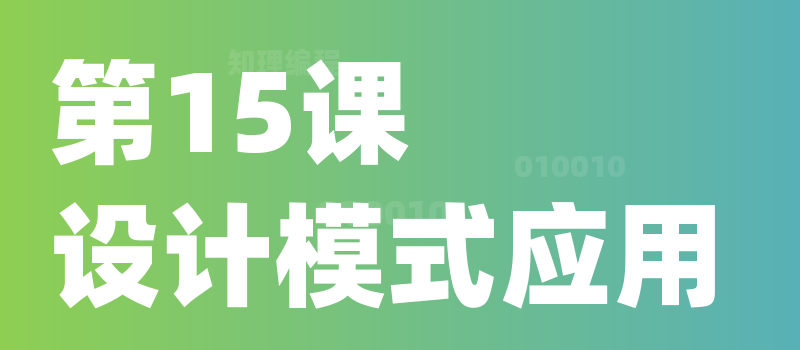第1课_this规则与使用
热度🔥:92 免费课程
授课语音
学习 this 规则与使用
this 是JavaScript中非常特殊且复杂的一个概念,它的值取决于函数的调用方式。理解 this 的规则是掌握JavaScript的重要步骤,能够帮助我们更好地处理对象和函数的上下文。
1. this 的基本概念
this 是一个关键字,代表当前执行上下文中的对象。具体来说,this 的值取决于函数的调用方式。
2. this 的常见用法和规则
2.1 全局上下文中的 this
在全局执行环境中,this 指向全局对象。在浏览器中,this 指向 window 对象。
console.log(this); // 在浏览器中输出 window 对象
中文注释:
- 在全局作用域中,
this默认指向全局对象。在浏览器环境下,全局对象是window。
2.2 函数调用中的 this
在普通的函数调用中,this 指向全局对象(在浏览器中是 window)。
function showThis() {
console.log(this);
}
showThis(); // 在浏览器中输出 window 对象
中文注释:
- 普通函数调用中,
this指向全局对象。如果在浏览器中运行,this会指向window对象。
2.3 对象方法中的 this
当函数作为对象的方法调用时,this 指向调用该方法的对象。
let person = {
name: 'Alice',
greet: function() {
console.log(this.name);
}
};
person.greet(); // 输出 "Alice"
中文注释:
- 在对象方法中,
this指向调用该方法的对象,在这里是person对象。
2.4 构造函数中的 this
在构造函数中,this 指向新创建的实例对象。
function Person(name) {
this.name = name;
}
let alice = new Person('Alice');
console.log(alice.name); // 输出 "Alice"
中文注释:
- 在构造函数中,
this指向新创建的实例对象,因此this.name会被赋值。
2.5 箭头函数中的 this
箭头函数与普通函数的一个重要区别是,箭头函数没有自己的 this,它会继承外部上下文中的 this。
let person = {
name: 'Alice',
greet: function() {
setTimeout(() => {
console.log(this.name);
}, 1000);
}
};
person.greet(); // 输出 "Alice"
中文注释:
- 在箭头函数中,
this不会被重新绑定,而是继承外部作用域中的this。在这个例子中,this.name仍然指向person对象。
2.6 call()、apply() 和 bind()
这三个方法可以显式地改变 this 的指向。它们的区别在于传递参数的方式。
2.6.1 call() 方法
call() 方法调用一个函数,并且明确指定 this 的值及传递给函数的参数。
function greet() {
console.log('Hello, ' + this.name);
}
let person = { name: 'Alice' };
greet.call(person); // 输出 "Hello, Alice"
中文注释:
- 使用
call()方法,可以显式地将this绑定到指定对象。
2.6.2 apply() 方法
apply() 方法与 call() 类似,不同的是它接受的是一个数组作为参数。
function greet(age) {
console.log('Hello, ' + this.name + '. You are ' + age + ' years old.');
}
let person = { name: 'Alice' };
greet.apply(person, [25]); // 输出 "Hello, Alice. You are 25 years old."
中文注释:
apply()与call()类似,但它接受一个数组作为参数。
2.6.3 bind() 方法
bind() 方法返回一个新的函数,这个新函数的 this 永远绑定到指定的对象上。
function greet() {
console.log('Hello, ' + this.name);
}
let person = { name: 'Alice' };
let greetPerson = greet.bind(person);
greetPerson(); // 输出 "Hello, Alice"
中文注释:
bind()方法返回一个新的函数,新的函数会永久绑定到指定的对象。
3. this 在不同场景中的应用
3.1 this 和事件处理
在事件处理函数中,this 指向触发事件的 DOM 元素。
let button = document.querySelector('button');
button.addEventListener('click', function() {
console.log(this); // 输出被点击的 button 元素
});
中文注释:
- 在事件处理函数中,
this指向触发事件的元素。在这个例子中,this会指向button元素。
3.2 this 和定时器
在 setTimeout 或 setInterval 中,this 默认指向全局对象(在浏览器中是 window)。
setTimeout(function() {
console.log(this); // 输出 window 对象
}, 1000);
中文注释:
- 在
setTimeout等定时器中,this默认指向全局对象。如果是在浏览器中,this会指向window。
3.3 this 与类(Class)中的使用
在 ES6 的类中,this 指向当前类的实例对象。
class Person {
constructor(name) {
this.name = name;
}
greet() {
console.log('Hello, ' + this.name);
}
}
let alice = new Person('Alice');
alice.greet(); // 输出 "Hello, Alice"
中文注释:
- 在类的方法中,
this指向当前类的实例对象。在这个例子中,this.name会访问Person实例中的name属性。
4. 总结
this的指向规则在 JavaScript 中非常重要,理解不同场景下this的指向能帮助我们编写更准确的代码。this在全局作用域中指向全局对象,在函数调用中通常指向全局对象,在对象方法中指向该对象,在构造函数中指向新创建的实例对象。call()、apply()和bind()方法可以显式地改变this的指向,灵活地控制函数执行上下文。- 箭头函数和普通函数的
this行为不同,箭头函数继承外部this,而普通函数会重新绑定this。
掌握 this 的使用规则,将有助于你在JavaScript开发中避免常见的陷阱,并能够灵活地处理各种上下文问题。








